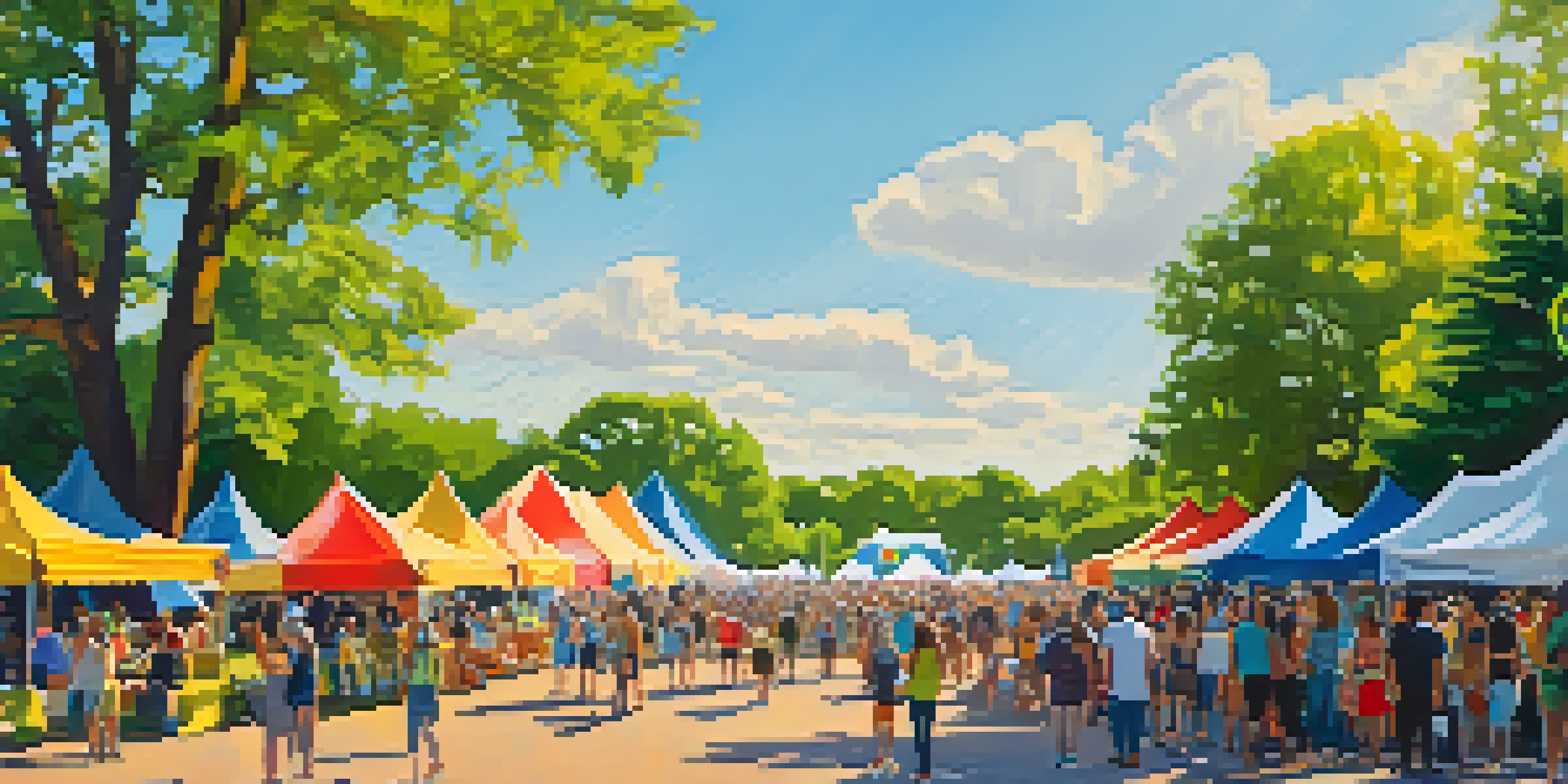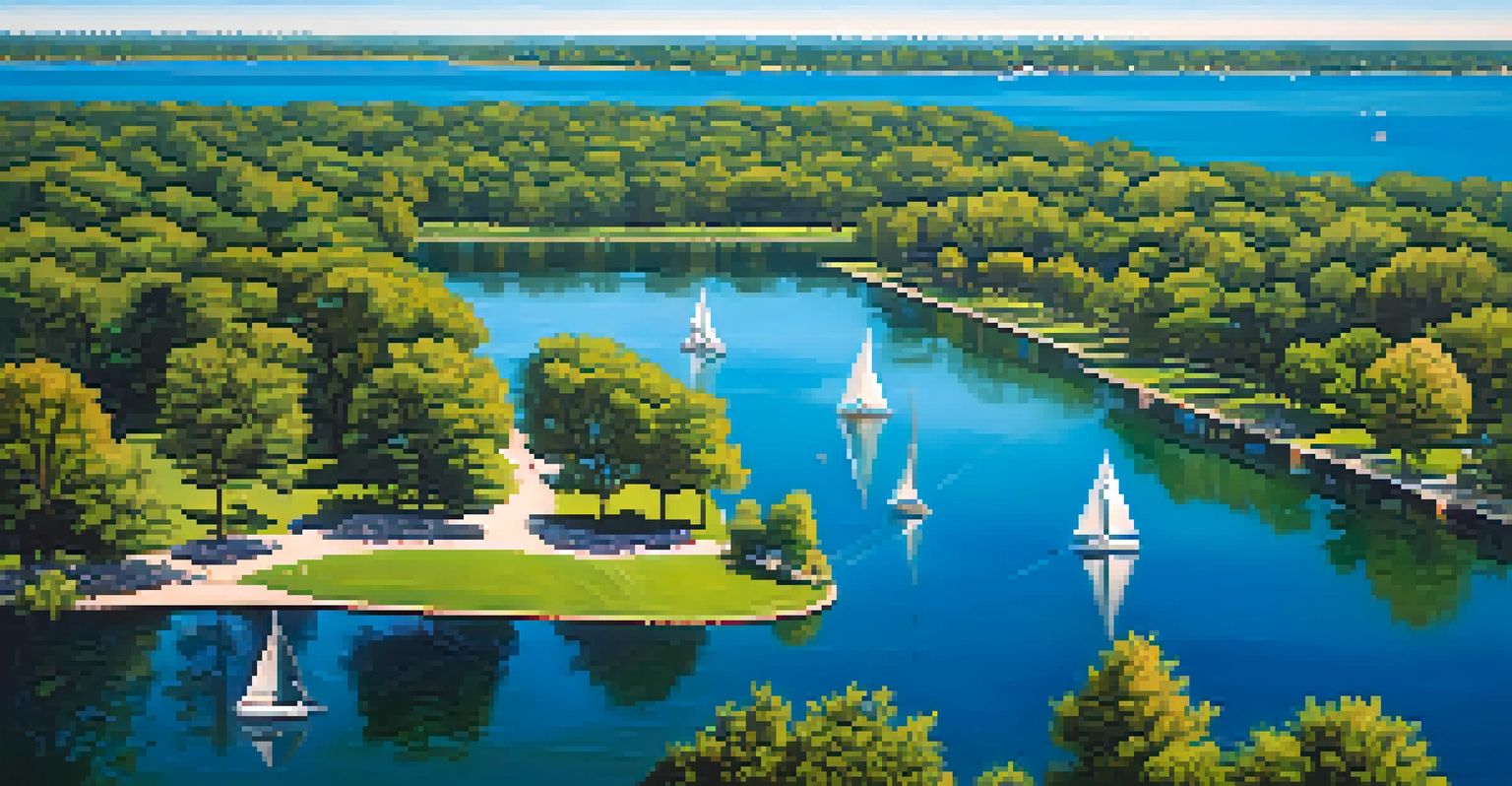The Historical Significance of Minneapolis Parks and Trails

The Origins of Minneapolis Parks: A Vision for Green Spaces
The story of Minneapolis parks begins in the late 19th century, when city planners envisioned a network of green spaces to enhance urban life. This vision was largely influenced by the City Beautiful movement, which advocated for parks as essential elements of a thriving city. The first public park, Mill Ruins Park, opened in 1883, setting the stage for a transformation in urban design.
Parks are not just a luxury; they are an essential part of a healthy urban environment.
Throughout the years, more parks were developed, showcasing the natural beauty of the area and providing residents with recreational opportunities. The integration of trails and waterways further emphasized the city's commitment to outdoor spaces. This early investment laid the groundwork for what would become a comprehensive park system, one that other cities would look to as a model.
Today, Minneapolis boasts over 200 parks and numerous trails, reflecting its robust historical commitment to green spaces. These parks not only serve as vital community hubs, but also honor the legacy of those early visionaries who understood the importance of nature in urban life.
Cultural Significance: Parks as Community Gathering Places
Minneapolis parks have long served as vital gathering spaces for communities, fostering social connections and cultural events. From summer music festivals to farmers' markets, these green areas have become the backdrop for community engagement and celebration. They provide a sense of belonging, where people from different backgrounds come together to enjoy shared experiences.

For instance, the iconic Powderhorn Park has hosted numerous community events, including the Powderhorn Art Fair, which showcases local artists and artisans. Such events not only highlight the talents of the community but also strengthen local ties. They create memories that residents cherish, reinforcing the parks' roles as cultural cornerstones.
Parks Enhance Urban Life
Minneapolis parks originated from a vision to create green spaces that improve city living and community engagement.
Moreover, these parks often reflect and celebrate the diversity of the city, with spaces designed for various cultural activities and gatherings. This cultural significance adds another layer to the historical importance of Minneapolis parks, making them integral to the city’s identity and community spirit.
Environmental Impact: Preserving Nature in Urban Spaces
Minneapolis parks play a crucial role in preserving the environment within the urban landscape. They provide essential green spaces that help mitigate pollution, enhance air quality, and foster biodiversity. The presence of these parks is vital for maintaining ecosystems, offering habitats for numerous plants and animals amidst the urban sprawl.
The best way to predict the future is to create it.
The city's commitment to sustainability is evident in its ongoing efforts to maintain and expand these green spaces. For example, initiatives like native plant restoration and stormwater management projects are designed to protect and enhance the natural environment. This approach not only benefits wildlife but also educates the public on the importance of environmental stewardship.
By integrating nature into the urban environment, Minneapolis parks remind residents of the beauty and importance of green spaces. They serve as a refuge for both people and wildlife, demonstrating how urban planning can harmoniously coexist with nature.
Historical Events and Parks: A Reflection of Change
Throughout history, Minneapolis parks have been the backdrop for significant events that reflect societal changes. From civil rights demonstrations to community celebrations, these parks have witnessed moments that shaped the city. For example, the 1960s saw gatherings in parks advocating for social justice and equality, highlighting the role of these spaces in civic engagement.
This historical significance is not just about the events themselves but also about the memories and stories they hold. Each park has its own narrative, often intertwined with the community's history. They serve as reminders of struggles and triumphs, making them more than just recreational spaces.
Cultural Hubs for Community
These parks serve as vital gathering places, hosting events that foster social connections and celebrate local diversity.
As we look back on these events, it's clear that the parks have played a crucial role in the narrative of Minneapolis. They are places where history is made and remembered, showcasing the evolving identity of the city and its residents.
Recreational Opportunities: A Legacy of Outdoor Activities
Minneapolis parks provide a wide array of recreational opportunities that have become a cornerstone of the city's lifestyle. From biking and hiking trails to sports fields and playgrounds, these parks cater to diverse interests and age groups. This focus on recreation promotes a healthy, active lifestyle among residents.
Take, for instance, the Chain of Lakes area, which offers everything from sailing to jogging paths. These well-maintained facilities encourage individuals and families to engage in outdoor activities, creating a vibrant community atmosphere. The parks not only enhance physical health but also contribute to mental well-being by providing spaces for relaxation and leisure.
The legacy of recreational activities in Minneapolis parks continues to grow, with ongoing investments in facilities and programming. This commitment ensures that future generations will also have access to the joys of outdoor life, further cementing the parks' role in the community.
Art and Nature: The Intersection of Creativity and Green Spaces
Minneapolis parks are not just about nature; they also serve as canvases for art and creativity. Public art installations, sculptures, and murals often adorn these green spaces, enriching the cultural experience for visitors. This blend of art and nature creates a unique atmosphere that invites exploration and appreciation.
For example, the Minneapolis Sculpture Garden is a prime illustration of how art can transform a park into a cultural landmark. Featuring iconic pieces like Spoonbridge and Cherry, it attracts locals and tourists alike, merging artistic expression with the beauty of the outdoors. This synergy between art and nature enhances the park experience, making it memorable and engaging.
Environmental Stewardship
Minneapolis parks play a crucial role in preserving nature, enhancing air quality, and promoting sustainability within the urban landscape.
Moreover, community-led art projects in parks encourage local involvement and creativity. These initiatives foster a sense of ownership among residents, helping to strengthen community bonds while beautifying the environment. This intersection of art and nature highlights the parks as vital spaces for creativity and inspiration.
Looking Ahead: The Future of Minneapolis Parks and Trails
As we look to the future, the importance of Minneapolis parks and trails remains undeniable. Ongoing efforts focus on enhancing accessibility, sustainability, and community engagement to ensure these spaces continue to thrive. The city’s commitment to expanding its park system reflects a deep understanding of its value to residents.
Future initiatives may include improving connectivity between parks and neighborhoods, making it easier for everyone to enjoy these green spaces. This vision aligns with broader goals of creating a healthier, more inclusive urban environment. By prioritizing parks, Minneapolis can foster a stronger sense of community and well-being among its residents.

Ultimately, the future of Minneapolis parks and trails will depend on collaboration between city officials, community members, and environmental advocates. Together, they can continue to build on the rich legacy of these parks, ensuring they remain vibrant, accessible, and cherished for generations to come.